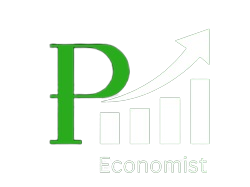WB changes its mind on Pakistan’s critical economic indicators

Publishing date: 29 October 2025
Published in: DAWN
In an unusual development, the World Bank on Tuesday improved Pakistan’s two critical economic indicators within a short gap – revised upward the current year’s economic growth projection to 3pc from 2.6pc and reduced poverty estimates to 22.5pc compared to 25.3pc last year, without taking into account the latest household integrated economic survey (HIES).
As part of the regional development outlook released on October 7, the World Bank had forecast Pakistan’s growth rate for the current year at 2.6pc, citing flood-related losses, down from its previous estimate of 3pc increase in gross domestic product (GDP).
On Tuesday, at the launch of the Pakistan Development Update 2025 – usually a part of the regional economic outlook – the World Bank improved the GDP growth forecast to 3pc again, citing lower than estimated flood losses but also asserting that it did not have flood loss estimates as of yet. “We don’t know the exact impact of (flood) losses,” said Bolormaa Amgaabazar, the WB’s country director in Islamabad.
Likewise, the Washington-based development lender reported on September 23 as part of its special report “Reclaiming Momentum Towards Prosperity” that the poverty rate in Pakistan had increased to 24.7pc in 2019-20, then dropped again to 18.3pc in 2021-22 and went up to 25.3pc in 2023-24 – a 7 percentage point surge within two years. The results would need to be updated with the HIES-2023-24, currently in the final stage, but vulnerabilities appeared to have increased with recent floods, World Bank’s Senior Economist Christina Wieser had said.
Lender increases growth projection to 3pc from 2.6pc, reduces poverty estimates to 22.5pc
On Tuesday, the bank said that the poverty rate reduced to 22.2pc in FY2025 from 25.3pc in FY2024, owing to modest growth and easing inflation.
“No, there was no pressure,” said Ms Wieser in response to questions. She added that the improvement was due to modest growth and easing inflation as the workers moved to the construction and transport sectors from agriculture. She said the revision did not take into account the HIES results but was induced through simulations based on GDP of 11 sectors, inflation, and a change in public and private transfers. “These are assumptions,” she added when probed further about the impact of over 3pc reduction in the national poverty rate with a nominal 2.7pc economic growth last year and over 2pc population growth.
The bank said the modest growths – 3pc in the current year and 3.4pc next year – would not be sufficient to improve living conditions for the majority and recent floods may actually deteriorate living standards of the poor and the vulnerable.
The pace of poverty reduction is also expected to slow, with poverty declining only modestly to 21.5pc in FY26 and to 20.6pc in FY27. Sustaining welfare gains and preventing long-term setbacks in human development for flood-affected households will require timely reconstruction and support efforts, complemented by robust social protection measures, it added.
However, the bank appreciated the “remarkable progress” in macroeconomic stabilisation last year, but warned of a lot of challenges ahead. “Sustaining progress will require a balanced mix of revenue and expenditure measures to manage flood impacts while maintaining progress towards fiscal consolidation,” said Mukhtarul Hasan, the lead author of the report.Anna Twum, co-author of the report, highlighted that Pakistan’s exports declined from 16pc of GDP in the 1990s to around 10pc in 2024, leaving growth dependent on debt and remittance-driven consumption.





